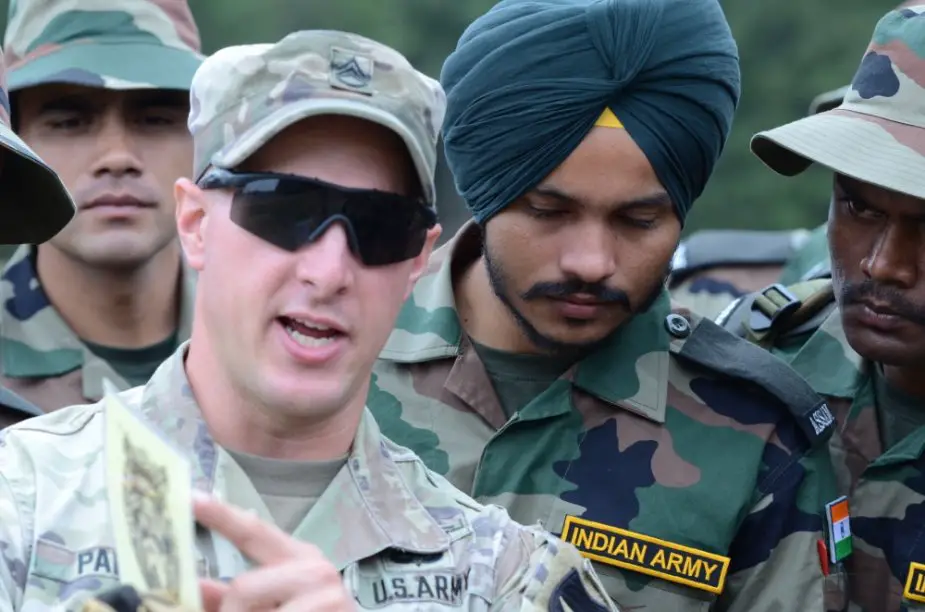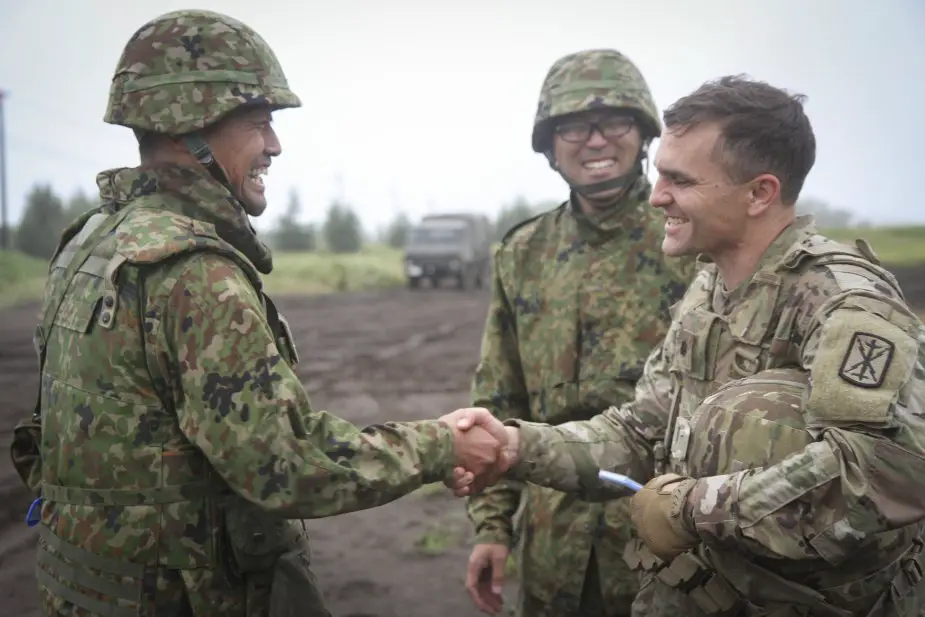As the U.S. Army prepares to potentially allocate $8.6 billion toward its six modernization priorities in the fiscal year 2020, a senior Army leader said the service should recognize Soldiers' ongoing work in the Pacific. Joe Lacdan explains on U.S. Army’s website.

U.S. soldiers from 1-2 Stryker Brigade Combat Team trained Indian Army soldiers on various sniper techniques and familiarized them with the M110 Semi-Automatic Sniper System and M2010 Sniper Rifle during Yudh Abhyas 2019, a joint nation training exercise at Joint Base Lewis-McChord, Washington. (Picture source: U.S. Army / Staff Sgt. Joseph Tolliver)
Lt. Gen. James Pasquarette, the Army's G-8, said during an Association of the U.S. Army breakfast Tuesday that Soldiers play a crucial part in the joint-service mission in the Pacific region. That role will become increasingly significant as the Defense Department continues to focus on potential threats by China in the region.
"Those that think a contingency operation in the Pacific is an Air Force and Navy fight are just simply wrong," said Pasquarette, who previously commanded U.S. Army Japan and also served as deputy commander of Fort Shafter, Hawaii. "It requires an integrative joint team to achieve our military objectives in the Pacific with the Army playing a major role in every aspect of the operation."
Army leaders have said China has been rapidly modernizing its capabilities and has been using anti-access/area denial sensor technology to deny its potential enemies, including U.S. forces, freedom of movement. Gen. Robert Brown, U.S. Army Pacific commander, said earlier this year that the Army remains committed to keeping the Pacific's waters free and open to other nations.
The Army participates in annual exercises in the Pacific including Cobra Gold, one of the world's largest military exercises where the U.S. works alongside partner nations like Thailand. The Army also takes part in Balikatan, a multi-national exercise hosted by the Philippines. The exercises help develop cohesion working with partner nations by working on counter-terrorism, interoperability and disaster response.
The Army's Special Forces units created a $23 million mobile training team to help strengthen the Mongolian army during peacekeeping missions. The Pacific Pathways 2.0 program will allow Soldiers to train and work with partner nations' units by remaining deployed for longer periods of time.
"The Army is an indispensable joint partner," Pasquarette said. "And where the Army is going in the future with long-range precision fires … air and missile defense, the network and other capabilities we're investing in, the Army will remain vitally important in the future in the Indo-Pacific, both from a deterrence and warfighting perspective."
Pasquarette said that under new senior leaders -- like Gen. James C. McConville, the Army's chief of staff, and Ryan McCarthy, who has been nominated as the next secretary of the Army -- the focus on modernization will continue, assuring that U.S. forces keep their competitive edge over adversaries like China.
"There's a level of trust and confidence between them and also an alignment for their vision for the future of the Army that we've not seen," Pasquarette said.
To keep pace with near-peer adversaries in fiscal 2020-2024, the Army has proposed to invest another $57 billion toward its modernization goals that will include $33 billion acquired from its "Deep Dive" process. Last year, Army senior leaders took a hard look at the service's programs and cut funding from 186 legacy programs in order to fund modernization priorities.
Pasquarette added that Army Futures Command is currently finalizing the Army Modernization Strategy being developed by Lt. Gen. Eric Wesley, AFC deputy commander. Previous modernization documents just focused solely on materiel and equipment, whereas the new strategy will take a holistic approach at modernization, complete with doctrine and organization "all wrapped together for a synchronized look at modernizing the Army," Pasquarette said.
Pasquarette said the Army recently had a second Deep Dive when he met with Bruce Jette, assistant secretary of the Army for acquisition, logistics and technology and Gen. John Murray, commander of Futures Command, giving another hard look at the Army's equipment portfolio.
"The screening criteria was the same: look at those that have little or nothing to do with lethality," Pasquarette said. "Look at those that we don't think will be effective in future operating environment we foresee in 2028 under the multi-domain operations concept; look at programs that we can slow down a little bit under acceptable risk."
Pasquarette wouldn't disclose a hard number for programs that he slated to reduce or eliminate but said their recommendations from that meeting have been sent to Secretary of Defense Mark Esper.
Pasquarette said that he expects that modernization will continue to be guided by the National Defense Strategy and that the modernization priorities will be fully funded. The Army's modernization priorities are bolstering the Army's network, long-range precision fires, future vertical lift, next-generation combat vehicles, Soldier lethality and air and missile defense.
It will begin with a greater focus on people first to help bolster Soldier readiness, Pasquarette said.
"I think we're going to continue to resource near-term readiness to ensure we meet our global requirements and not plan requirements," he said. "We are not walking away from the readiness of our Soldiers to be ready to fight tonight and support what our combatant commanders need globally."

U.S. Army Lt. Col. Timothy Lynch, commander of 5th Battalion 3rd Field Artillery Regiment, shakes hands with the battalion commander of Western Army Field Artillery of the Japan Ground Self-Defense Force at Yausubetsu Training Area, Japan, Sept. 16. (Picture source: U.S. Army / Capt. Rachael Jeffcoat)















